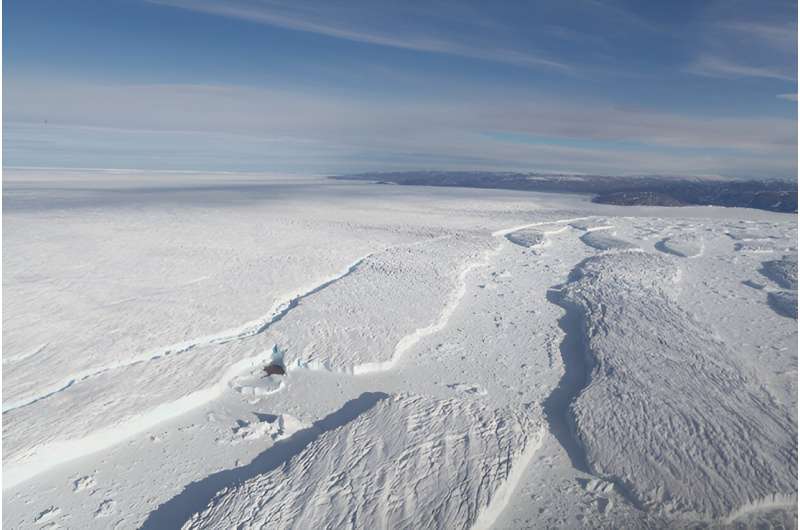
The largest floating ice shelves in the polar ice sheet have lost more than a third of their volume since 1978. In a study published on Nov. 7 in Nature Communications, scientists from the CNRS, alongside their Danish and American colleagues, have established that most of this thinning is due to the rise in surrounding ocean temperatures, which causes the glaciers’ floating extensions to melt.
Until now, the glaciers in this region were considered to be stable, unlike more sensitive areas of the polar ice cap, which began to weaken in the mid-1980s.
Located in North Greenland, these ice shelves play an essential role in regulating the amount of ice discharged into the ocean by acting as huge frozen “dams.” Although Greenland is already responsible for 17% of the current rise in sea levels, any weakening of these barriers could lead to an increase in the amount of ice released, accelerating further rises in the water level.
These results were obtained using field observations, aerial photography and satellite data, combined with regional climate models.
More information:
Romain Millan, Rapid disintegration and weakening of ice shelves in North Greenland, Nature Communications (2023). DOI: 10.1038/s41467-023-42198-2. www.nature.com/articles/s41467-023-42198-2
Journal information:
Nature Communications
Provided by
CNRS
Data show Greenland’s ice shelves have lost more than a third of their volume since 1978 (2023, November 7)
retrieved 8 November 2023
from https://phys.org/news/2023-11-greenland-ice-shelves-lost-volume.html
part may be reproduced without the written permission. The content is provided for information purposes only.